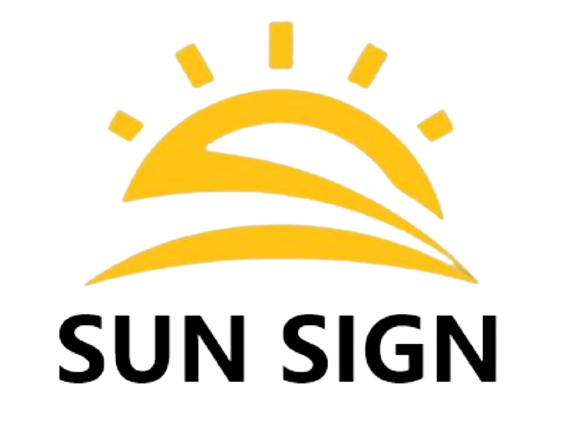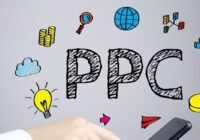Direct response radio advertising, at its core, works in the same way regardless of what type of business you are in. Whether you own a direct-to-consumer model business, a retail business, a web business, or some combination thereof, direct response radio advertising can help you grow. And grow profitably. The fundamentals of direct response radio, then, must start with a discussion of how radio advertising works within the context of a basic business model. The purpose of this article is to convey the fundamentals of direct response radio advertising that apply across businesses.
First, Two Important Concepts
Throw out all you think you know about advertising, radio advertising, and especially direct response advertising. It’s best to begin with a clean slate, a blank whiteboard so-to-speak. There are two important concepts I want to introduce before moving forward.
Concept One: Radio as A Highway From Your Business to Your Potential Customers
Think of radio advertising as a 5,000 lane highway from your business to groups (station audiences) of your potential customers. The many lanes on this highway are the many different radio stations and radio networks that are available for you air your radio advertisement. It is on these “lanes” that you send your message to your customers.
The lanes are clustered in such a way that they reach groups collections of customers who have similar tastes and demographic profiles. Therefore, some of these lanes lead to groups that have a high concentration of people who match your target customer profile. As a result, advertising on those lanes (stations) is more profitable than others with a lower concentration of your target customer profile. These groupings are the radio formats, which are used in radio advertising to enhance the efficiency of, or return on, advertising efforts. For more about radio formats.
Concept Two: Radio Advertising is a Profit-Driver, Not a Cost Center
At this juncture, the one thing many business people can’t seem to put out of their mind is the one of “how much does it cost” to advertise on radio. We’ve written extensively about this question because it is one of the most common that we get. The problem is that embedded in this question is the presupposition that radio advertising is a cost. The concept that one needs to fully grasp is that radio advertising is not a cost center. That is, it does not stand alone without any relation to revenue or profit. It is detrimental to think of direct response radio advertising as a cost because that leads to managing as though it’s a cost, which means minimizing or eliminating it. Contrast this with managing it like it’s an investment, and maximizing the return you realize on it.
Direct response radio advertising – by its very definition – is a profit-driver. If it’s not driving a profit, it would not exist – or at the very least it would not be called direct response radio advertising but instead “brand” or “awareness” advertising. Profitability is a fundamental aspect of direct response radio advertising.
On To the Fundamentals
Now that we’ve cleared our minds and allowed for two basic concepts about how to think about radio advertising, let’s move on to the meat of the fundamentals of direct response radio advertising.
The Basic Formula
We’ll begin with the basic formula involved in all direct response advertising:
You buy placement in radio media to air your radio ad, which gets your message broadcast to a certain number of people. This results in a cost per person reached with your message. In advertising this is known as CPM, or cost per thousand impressions of your ad.
Some percentage of those people will respond (call, visit your web site, visit your store), giving you a response rate.
Of those who respond (otherwise known as leads), a percentage will be converted into customers (orders), and by that conversion rate generate profit and revenue.
From this formula, you will derive your media “CPO”, or “cost per order”, which is found by dividing media spend by the number of orders achieved with that spend (media spend in the numerator/number of orders in the denominator). This is the amount it costs you in radio advertising to acquire one new customer, which is why it is also called “cost per acquisition” (“CPA”).
The important question at this point is this: Is the lifetime value (“LTV”) of each of your customers, on average, greater than this CPO? This fundamental question applies whether your business is a direct response advertising business (which includes radio advertising, print advertising, DRTV, catalog, or internet) or a traditional retailer. Every business pays to acquire a customer, and every business has a certain propensity to retain that customer over a period of time in a relationship consisting of subsequent purchases and therefore profit streams. Regardless of whether your business uses direct response radio to acquire new customers, or it uses one of the other approaches to customer acquisition, your success will be fundamentally based on whether your business model facilitates a strongly positive lifetime value. If it does not, there is little that radio advertising, or any other form of advertising, can do to change this.
If your LTV is not greater that your CPO, your business isn’t profitable and you’ll want to stop advertising so you can make the changes to both the advertising and the business model that will result in profitability. Even if LTV is greater than CPO, you will want to increase that amount to maximize your profitability. To do this, you’ll need to increase LTV and/or decrease CPO. This process is called business (or campaign) profitability optimization, and it is absolutely essential to the long term success of any direct responses radio advertising effort.
Improving Lifetime Value
There are a number of ways to increase the LTV of each customer. Let’s look at three of the main ways:
1. Increase price without increasing cost. One way to do this is by increasing the percentage of orders that include high-margin upsells. Retailers do this all the time. They put super high margin items right at the checkout. Direct response advertisers can learn a lot from this. Identify widely appealing, complementary items and ensure they are offered as part of the sales process.
2. Increase repeat purchase. You have paid to acquire that customer, now develop a relationship and continue to meet their needs to drive repeat purchase. If they only buy once from you, you don’t have a very viable business unless that first purchase is incredibly high margin.
3. Reduce your cost structure. Take advantage of your increased volume to negotiate better product costs, shipping costs, etc.
Improving Cost Per Order
Just as there are a number of ways to increase LTV, there are also many ways to decrease the CPO.
1. Reduce the media cost per person reached. Also known as CPM, this is a standard metric used in advertising. It reflects the cost to reach 1000 people. (remember that CPM stands for “cost per thousand” impressions of your message). This is a constant focus of any good direct response radio agency, and the element in direct response radio advertising that has received the most attention. This is why every dollar of media in direct response radio is remnant advertising. But that’s not all that should be considered when looking to reduce CPM. Leveraging database technology and using scientific testing methodology, it is possible to identify the optimum schedule to use in placing the media. Thus optimizing the media schedule can meaningfully reduce CPM.
2. Increase response rate. Again, media scheduling will play a role here. In addition, use of radio formats to effectively target the right customers is vital to optimizing response rate. But perhaps the greatest impact on response rate in direct response radio advertising is the messaging in the radio ad itself. Great direct response radio ads significantly enhance the responsiveness of the media dollars spent. Your radio agency’s ability to create radio ads that elicit response from your potential customers is a crucial element in direct response radio advertising success.
3. Increase conversion rates. Increasing the percentage of inquiries that become customers can have an enormous impact on campaign profitability. The factors that will most impact conversion rate are your sales scripting, web copy, product offers, pricing, and your guarantee or return policy. As much as any other variable, these factors need to be tested and continuously refined.
Implications and Conclusions
Now that you understand the fundamentals of direct response radio advertising, let’s look at the implications and conclusions that these fundamentals illuminate:
1. The role of database technology and analysis
By now it is clear that optimizing both lifetime value and cost per order maximizes your business profitability. But doing these things also requires capturing and analyzing an enormous quantity of data. To do this in a way that allows for distilling insights requires a robust database specifically tuned for direct response radio, along with well-refined analysis approaches. Fortunately, database technology and robust analysis are a part of the services your radio agency will provide for you.
2. The importance of ongoing testing
Any discussion of the fundamentals of direct response radio advertising (or any type of direct response advertising) would be incomplete without addressing the topic of testing. When you look at the above approaches to maximizing campaign profitability, you see the key metrics that must be impacted. But how do you actually impact them? How do you know whether offer A is better than offer B? or C? How do you know whether copy D drives a better response rate than the control? How do you know whether the sales scripting or the pricing structure could be improved by certain changes? The only way to know these things is to test. As a result, testing is a never-ending element in direct response radio advertising efforts. If you are not testing, you are slowly going out of business.
3. Success in direct response radio advertising is about more than costs
As we’ve mentioned, one of the biggest questions we get is “how much does it cost to advertise on the radio?”. Done correctly, direct response radio advertising is not a cost center, it’s a profit center. It’s a very efficient way to acquire new customers at a low CPO. To learn more on the topic of radio advertising costs and how to budget for radio advertising.
4. Nearly any business can grow profitably with direct response radio advertising
It is difficult for me to think of businesses that cannot benefit from the kind of radio advertising that we are involved in. Direct response radio advertising is different from other forms of advertising because it is accountable for results, and the only way it can be accountable is to leverage a set of technological and human systems and processes to accurately capture, analyze and interpret results of the advertising. Once you have that in place, you have established a continuous improvement loop. Therefore, provided you have a profitable business model and a good product that delivers on a unique and relevant promise, your business can profitably acquire new customers with direct response radio advertising. That’s the ultimate promise of direct response radio: the ability to grow your business profitably at the rate you want to grow it. Once you establish profitability, you need only increase your media spend to drive higher revenues and profits.
The Fundamentals in Perspective
Direct response radio advertising does not stand alone in creating a business. It works in combination with your business model to acquire new customers at a low, and therefore profitable, CPO. What makes direct response radio advertising so attractive is its efficiency and flexibility, which results in comparatively low CPO’s relative to other mediums.
This article explains the fundamental elements involved in how nearly any business can use direct response radio advertising to acquire new customers and grow both profitably and rapidly. Once you understand the fundamentals of radio advertising, you’re ready to embark on the process of building a direct response radio advertising campaign. That process involves developing a radio advertising strategy, creating radio ads that drive response, and implementing a radio media plan that delivers your message to the right people for the right cost.
Article Source: http://EzineArticles.com/387630



